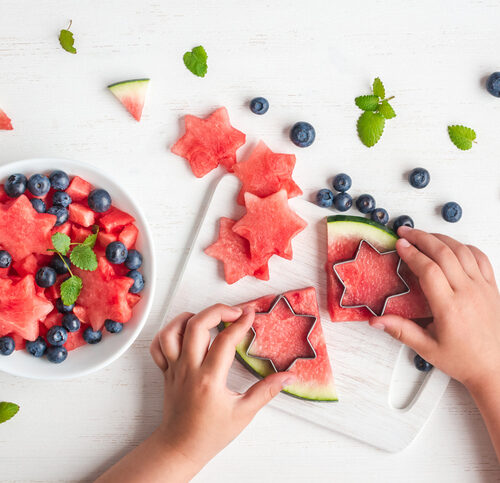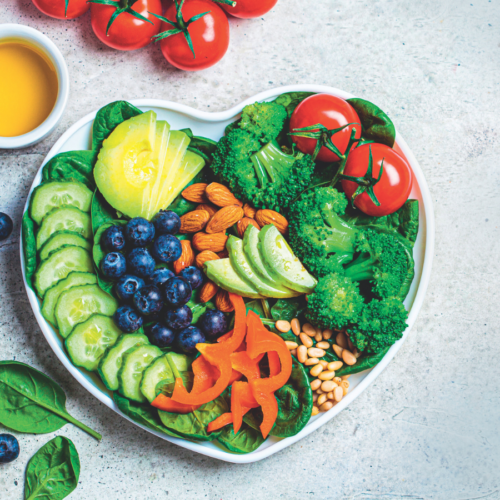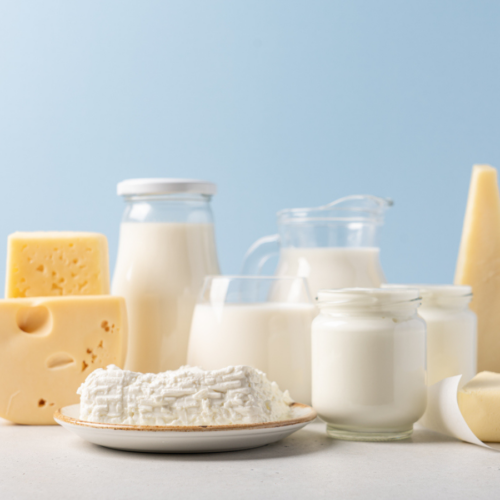
Healthy Food Guide nutritionist Claire Turnbull has tips for freshening up our tired meals.
Great ideas for turning common, everyday meals into something new, fresh and tasty!
Breakfast
- Whip up a smoothie with banana, berries, kiwifruit or any combination of fruits. Add a few tablespoons of your favourite low-fat yoghurt and a splash of trim milk. This makes a great antioxidant-packed breakfast. For an extra boost add a few rolled oats, wheat bran or even a bit of your favourite cereal and a few walnuts to the blender – delicious!
- Try high-fibre muesli topped with frozen or fresh berries and a grated apple or pear with ice-cold trim milk.
- A homemade healthy muffin can be a great breakfast and quick to grab if you’re always in a morning rush. Adapt a standard muffin recipe by replacing half the white flour with wholemeal, using a reduced-fat canola, rice bran or olive oil spread instead of butter, replacing half the butter/spread with low-fat plain yoghurt and adding some dried fruit. Or adapt a bran muffin recipe in a similar way for a higher-fibre start.
Lunch
- Sushi: Only order as many pieces as you need. If you order eight and are full after five or six, it can be very hard to turn your back on the lonely leftovers, so start small.
- Sandwiches: Go for wholegrain bread as often as you can. Wholegrain breads have added nutritional benefits as they are high fibre and rich in B vitamins, selenium, magnesium and zinc. Why not try an open sandwich – lightly toast your favourite grainy bread, spread with hummus and top with shredded chicken, a pile of mixed leaves and a little salsa or chutney. A great alternative to sliced breads are pita breads and wraps. These have the added bonus of having more room for extra salad to be packed in! Again, go for wholemeal or wholegrain varieties.
- Salads: Nothing screams summer more than salad, but if you think lettuce and cucumber is all it means, think again. Salads can be as varied and exciting as you let them. Try lettuce or very thinly sliced cabbage as a base. As well as the old favourites like tomatoes and cucumber, try adding bean sprouts, freshly chopped herbs, sliced boiled egg, sliced celery, grated beetroot, chickpeas, butter beans, cooked green or brown lentils, spring onion, snow peas, corn, radish, lemon zest, walnuts, apple, sliced pear, sesame, sunflower and pumpkin seeds (although perhaps not all at once!). The ideas are endless so use your imagination.
Dinner
- Try stir-frying or steaming seasonal vegetables with a little sesame oil.
- Using minimal water when you cook vegetables helps keep the goodness in.
- Barbecue or grill meat with a light marinade. Thread through a skewer before cooking to make an instant kebab.
- Try cooking fish with lemon or lime juice and zest, a clove of crushed garlic and a few capers.
- Instead of plain spuds, experiment with different types of rice, couscous or quinoa.
Snacks
- For a light, tasty snack, try wholegrain, rice or corn crackers with cottage cheese and a blob of your favourite chutney or salsa.
- For a sweeter taste, try a very low-fat spreadable cheese like Philadelphia Extra-Light Cream Cheese Spread with a spot of jam. Different, but delicious!
Healthy foods to try
Alfalfa sprouts
You’ll find them with fresh salad vegetables in the supermarket. They are alfalfa seeds that have been allowed to sprout. Add them to salads, stir-fries and sandwiches for a nutritional boost and extra crunch.
Pumpernickel
A moist, dense, wholegrain rye bread. High in fibre, low GI and with a nutty flavour. Use it in place of your usual bread for sandwiches or cut into small squares and top with any adventurous topping you like!
Canned fish
Not new to many of us, but under used! Buy fish in spring water and make fish pies, fish cakes, salads, pasta, rice or couscous dishes. A great way to get omega-3 along with a protein boost.
Falafels
Falafels are small patties made from a blend of chickpeas or broad beans, herbs and spices. Use in salads, sandwiches, wraps or just by themselves with plain low-fat yoghurt.
Chickpeas, like all pulses including peas, beans and lentils, really are super foods! They are high in fibre, low in fat and a good source of protein. Most of us could aim to eat far more of them for the good of our health. You will find falafel mix in the chilled section of the supermarket or as a dried mix.
To cook falafels, shape mixture into small balls and lightly fry in spray oil until warmed through. Alternatively, do away with the oil altogether and line your pan with baking paper – cook the falafel directly on the paper.
New cooking habits to get into
Change the way you slice and dice
Try using a potato peeler to make ribbons of carrots, courgettes or parsnips. Grate carrot, beetroot or onions to create new textures. Abandon the boring old circles and cut spring onions, leeks, carrots, courgettes, cucumber, celery and eggplant into baton shapes before cooking. A little bit of cutting magic goes a long way.
How about herbs?
What a great way to add extra nutrients to food as well as fantastic colour. Don’t be afraid to use a large amount; think handfuls, not a token sprig or sprinkle. They are super easy to grow yourself… go on… find your green fingers.
Drinking water
It can sometimes be challenging to drink enough water each day, so try sprucing up the taste. Store water in a jug in the fridge with slices of lemon and a sprig of mint. Or make ice cubes with a slice of lemon, lime or a sprig of mint in them. They will flavour your drink as they melt.
www.healthyfood.com










